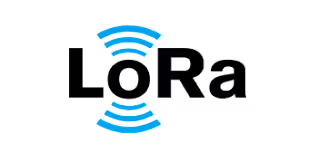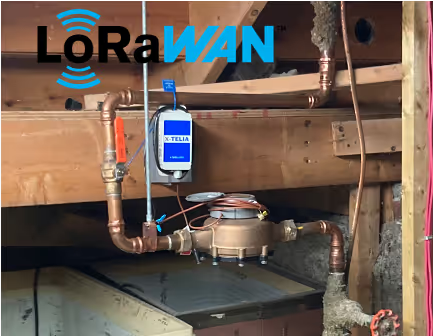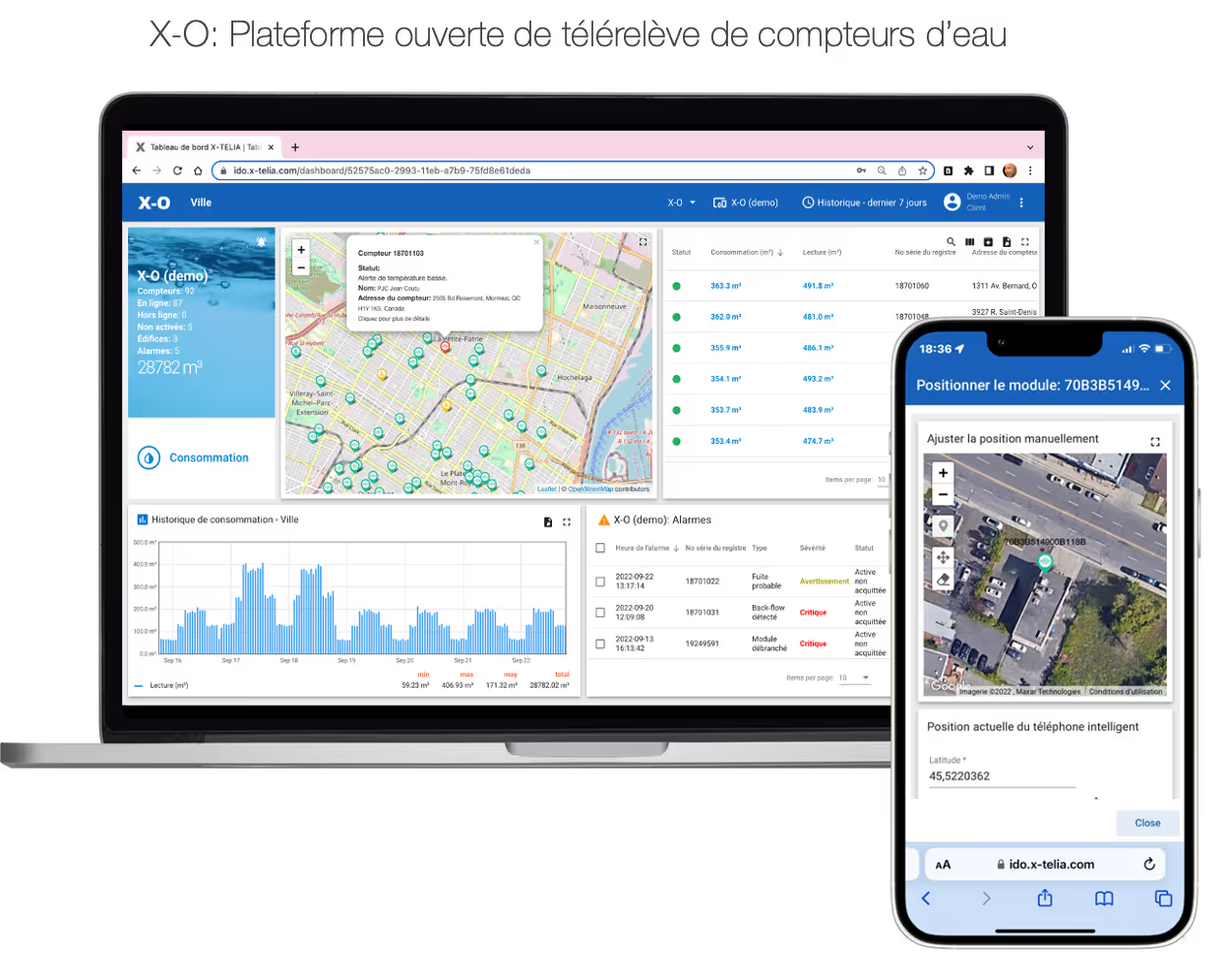Remote Water Meter Reading in the Municipal World
More than ever, cities around the world feel the need to have water meters and an efficient system for reading them. Our societies are increasingly aware of the importance of protecting this essential resource and avoiding waste. This is why cities are gradually moving from an annual or quarterly reading mode for billing purposes to a continuous reading mode that allows very proactive management of drinking water distribution. Indeed, having access to an hourly consumption reading for an entire park allows for a quick reaction in the event of leaks, excessive consumption, or equipment failure. In addition, this data is invaluable when it comes to planning changes to the distribution network or reviewing the pricing model.
Standards and Technologies
Reading
Remote reading of water, gas, or electricity meters has been done for a long time in Europe and elsewhere in the world, particularly due to the high cost of water and electricity compared to North America. In these countries, we have seen a transition from a manual reading model to a wireless reading model via a vehicle equipped with technologies to read meters located nearby (drive-by), to a remote reading via fixed networks model. This refers to antennas deployed in the city to receive messages from meters scattered throughout the territory.
This last model proves to be the most efficient because it allows for continuous collection of readings without having to move anyone.
The first remote reading solutions via fixed networks were developed by the industry with so-called "proprietary" technologies. Each manufacturer had its standard that only worked for its own meters, thereby attaching its customers for the life of the reading solution. One had to choose the right supplier and live with their decision for 10 or even 20 years. Each supplier having its technology, it was necessary to have different antennas throughout the city for different remote reading applications, which became difficult for a city's IT teams to manage.
The emergence of standards
It was then that we saw the emergence, first in Europe, of new "open" wireless communication technologies allowing not only to read water meters, but also gas or electricity meters from different manufacturers on the same wireless infrastructure. In fact, cities can now develop other applications well beyond remote reading via a unique and standard municipal telecommunications infrastructure based on these standards. Antennas are installed once for remote reading of water meters, and the same network is reused for all kinds of smart city projects for the next 20 years (waste levels in containers, water levels, smart parking, etc.).
LoRa and Sigfox
So what is it specifically? Well, two global standards now have the majority of the fixed-network meter reading market, namely LoRa technology (and its LoRaWAN communication protocol developed by the LoRa Alliance) and Sigfox technology, both developed first in Europe and now widespread pretty much everywhere. In 2021, there were 60 million meters of gas, water and electricity read wirelessly in France, 60% of which were read by LoRa or Sigfox. These two technologies consume very little energy, have a very long range but can only carry small amounts of data, which corresponds quite well to a use case such as remote meter reading.


Cellular?
But since cellular technology is quite ubiquitous, why not use it for remote reading? We would avoid having to deploy antennas to cover a city? Well, each wireless technology has properties, strengths, and weaknesses that must be taken into account. Cellular (LTE, LTE-m, 5G) allows a lot of data to be transferred, which is ideal for applications such as video transmission from surveillance cameras, for example. In fact, the more cellular bandwidth increases, the more it opens the way for applications that carry more and more data. But there is a price to pay for all this bandwidth. Indeed, the more data a wireless technology can carry, the more energy it consumes and the less distance it travels. This is why mobile operators around the world are deploying many new antennas to support 5G.
So what is the impact on remote water meter reading? Well, since the radio transmitters that read the water meters and transmit the readings are battery-powered devices, a less energy-consuming technology is better. Also, since water meters are often in basements, the longer the wireless technology has a long range, the better it will work. Unlike the transport of video images, remote water meter reading requires very little bandwidth because only very small amounts of information are transmitted.
Finally, there is the cost component. The power and high bandwidth of cellular have a higher cost than technologies like LoRa or Sigfox, which makes it a questionable technological choice for remote water meter reading.
Access to data, but at what price?
It's good to remotely read water meters via an open and standard communication technology, but you still need to have access to your data. And there too, the industry has been trying to tie its customers for years by only allowing access to reading data via their software and web portals. Indeed, since the format of the data sent by wireless message is still too often the well-kept secret of the wireless transmitter manufacturer, it is impossible for a customer to have access to the raw data directly, or to choose another platform to display and manage their reading data without first retrieving it from the (paid) software of the meter or wireless transmitter manufacturer. Nowadays, more and more water meter manufacturers such as Neptune, Badger or Mueller systematically refuse to share the "decoder" (the recipe for decoding the message containing the meter reading) with anyone, under the pretext that it would be intellectual property. But when you think about it, the data should belong to the customer, not the manufacturer. And the customer should be able to dispose of it as he sees fit without being required to pay the manufacturer for access to it, every year for the next 20 years...
The arrival of real open solutions
In 2018, when X-TELIA began deploying its LoRa network in Quebec, the issues surrounding proprietary technologies, access to raw data, and requests from several cities led us to develop a completely open and non-proprietary water meter reading solution. Readings are taken using LoRa technology, and data access is provided via a web and mobile web portal. The solution is compatible with various LoRa transmitters and water meters from most manufacturers. The major difference for a city is that it owns the data at all times and can access it directly from the LoRa network without necessarily going through our web management platform. The city is therefore free to change platforms as it wishes, whenever it finds one that better suits its needs. Gone are the days when customers were tied to a paying water meter manufacturer's platform for a minimum of 20 years without the possibility of changing. Gone are the days when raw reading data was only accessible to the reading solution manufacturer and the customer had to pay a subscription to the portal to access it. And gone are the days when you had to marry a water meter or reading solution manufacturer. Today, cities that have adopted the X-TELIA solution can choose their water meter supplier and change suppliers whenever they want. The same goes for the management platform. The data belongs to them, and that's a good thing.



To learn more about this new approach adopted by more and more cities in Quebec and elsewhere, or to get a demo of our open water meter reading platform (compatible with most water meter manufacturers), contact us
at: info@x-telia.com.

X-TELIA is a Canadian technology company specializing in Internet of Things and LoRaWAN solutions. It supports companies and cities that want to deploy wireless applications based on highly secure, low-cost and low-power long-range connectivity. X-TELIA offers solutions that have been proven elsewhere in the world, as well as leading-edge expertise to facilitate the shift to the Internet of Things. X-TELIA also operates a next-generation wireless network dedicated to the Internet of Things, specifically designed to support new applications that make cities smarter, industry more efficient and citizens safer.



